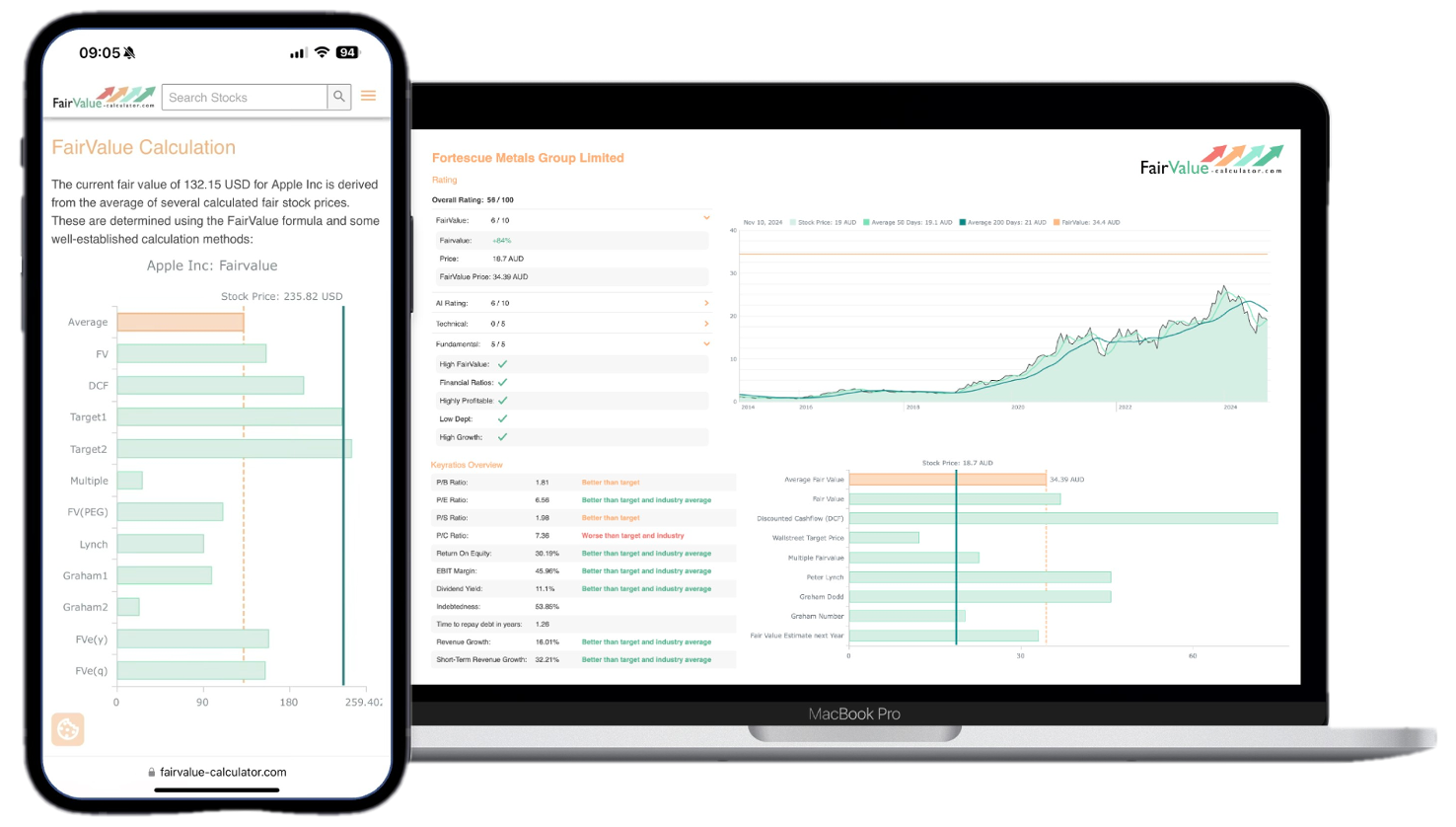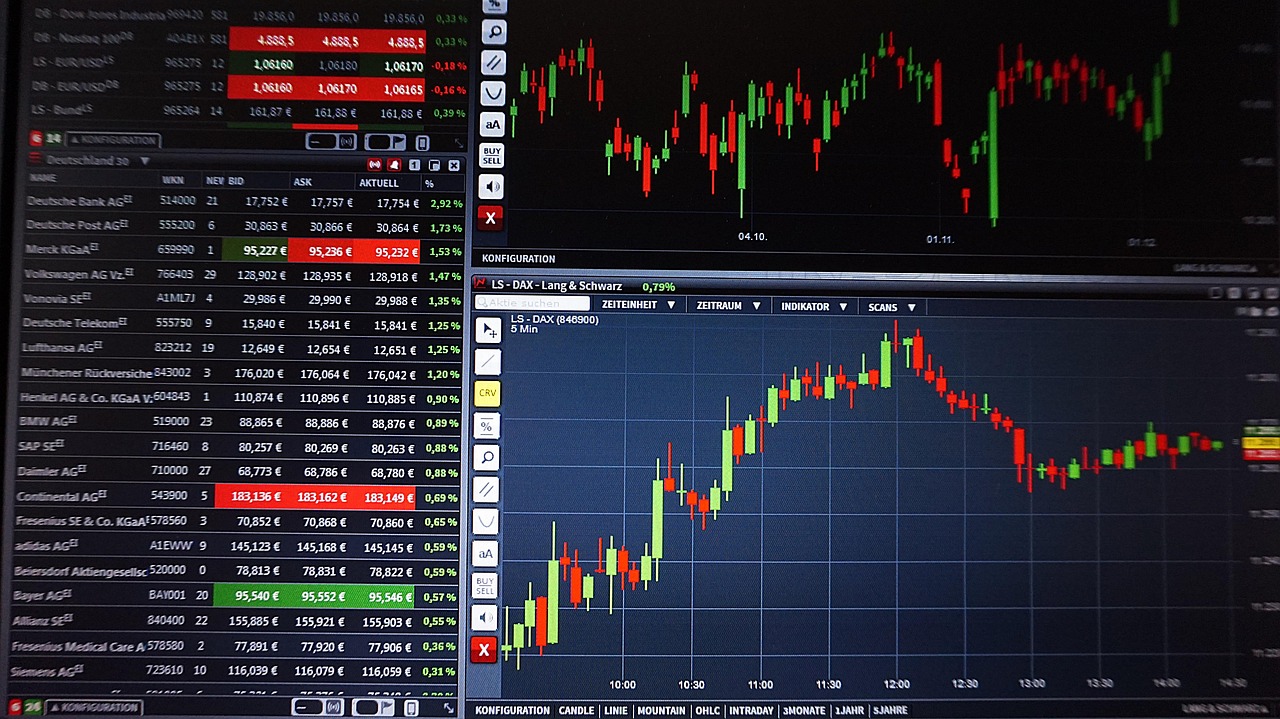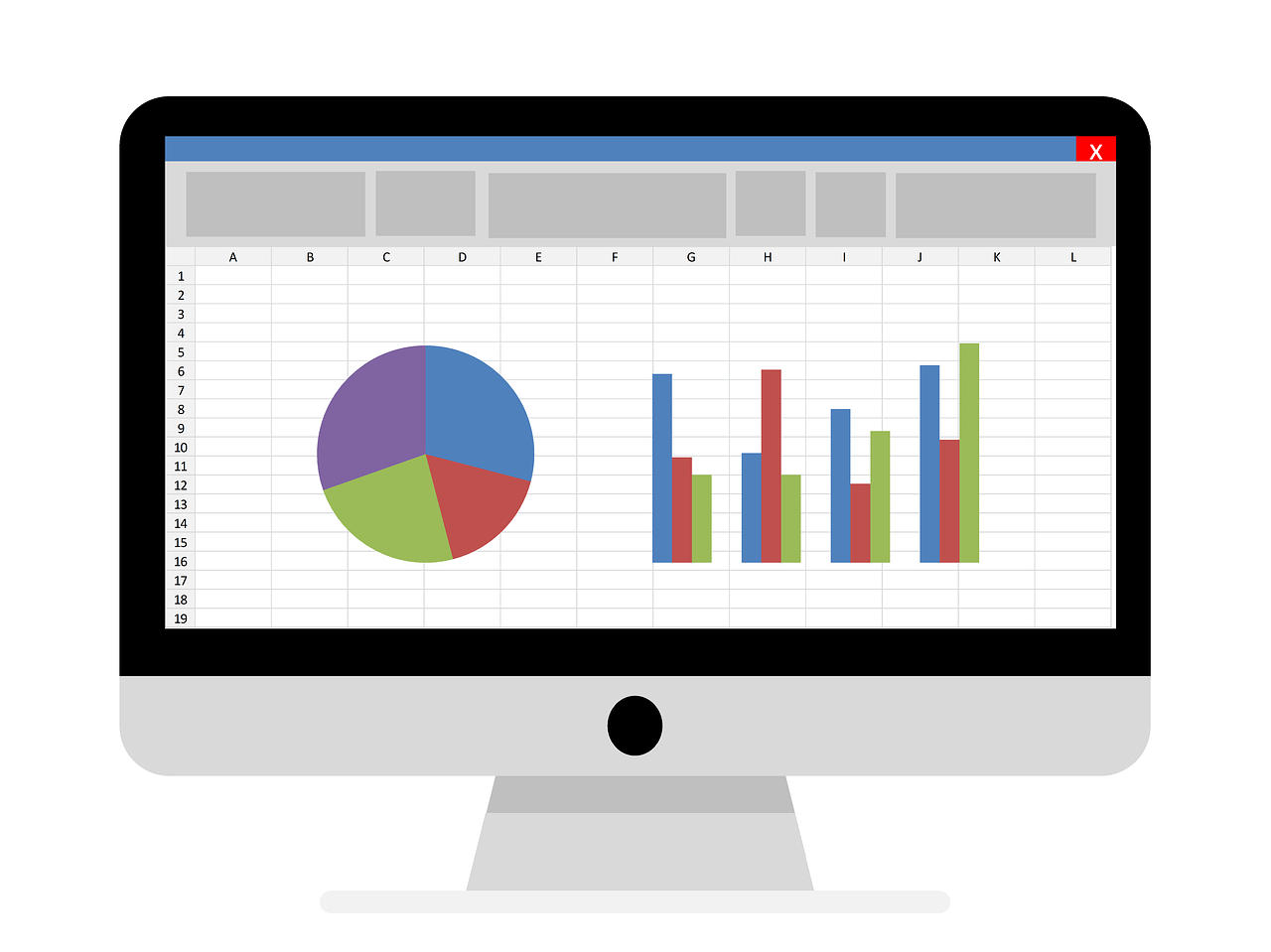The investment landscape has undergone dramatic shifts since 2020, fundamentally changing how we approach stock valuation. With persistent inflation, evolving interest rate environments, and technology disrupting traditional business models, determining stock fair value 2025 requires a more sophisticated approach than ever before.
💡 Discover Powerful Investing Tools
Stop guessing – start investing with confidence. Our Fair Value Stock Calculators help you uncover hidden value in stocks using time-tested methods like Discounted Cash Flow (DCF), Benjamin Graham’s valuation principles, Peter Lynch’s PEG ratio, and our own AI-powered Super Fair Value formula. Designed for clarity, speed, and precision, these tools turn complex valuation models into simple, actionable insights – even for beginners.
Learn More About the Tools →🚀 Test the Fair Value Calculator Now!
Find out in seconds whether your stock is truly undervalued or overpriced – based on fundamentals and future growth.
Try it for Free →Understanding Fair Value in Today’s Market Context
Fair value represents the intrinsic worth of a company’s stock based on its fundamental financial metrics, growth prospects, and risk profile. Unlike market price, which fluctuates based on sentiment and speculation, fair value provides a rational baseline for investment decisions.
Explore our most popular stock fair value calculators to find opportunities where the market price is lower than the true value.
- Peter Lynch Fair Value – Combines growth with valuation using the PEG ratio. A favorite among growth investors.
- Buffett Intrinsic Value Calculator – Based on Warren Buffett’s long-term DCF approach to determine business value.
- Buffett Fair Value Model – Simplified version of his logic with margin of safety baked in.
- Graham & Dodd Fair Value – Uses conservative earnings-based valuation from classic value investing theory.
- Intrinsic vs. Extrinsic Value – Learn the core difference between what a company’s really worth and what others pay.
- Intrinsic Value Calculator – A general tool to estimate the true value of a stock, based on earnings potential.
- Fama-French Model – For advanced users: Quantifies expected return using size, value and market risk.
- Discount Rate Calculator – Helps estimate the proper rate to use in any DCF-based valuation model.
In 2025’s economic environment, traditional valuation models face new challenges. Central bank policies have created unprecedented market conditions, while artificial intelligence and digital transformation have accelerated business model evolution across industries. These factors make accurate fair value analysis both more critical and more complex for modern investors.
Essential Components of Modern Stock Fair Value Analysis
1. Discounted Cash Flow (DCF) Modeling with Updated Assumptions
The DCF method remains the cornerstone of how to analyze stock fair value, but 2025 requires updated assumptions about discount rates and growth projections. Current analysis must account for:
- Risk-free rates reflecting today’s interest rate environment
- Equity risk premiums adjusted for market volatility
- Terminal growth rates that consider long-term economic projections
- Free cash flow projections incorporating digital transformation costs
2. Comparative Valuation with Industry-Specific Metrics
Modern comparative analysis goes beyond simple P/E ratios. Effective stock valuation in 2025 incorporates:
- Sector-specific multiples (EV/EBITDA for capital-intensive industries, P/S for high-growth tech)
- Forward-looking metrics based on analyst consensus and company guidance
- Quality adjustments for competitive moats and market positioning
- ESG premiums or discounts reflecting sustainability impact on valuations
3. Asset-Based Valuation for Balance Sheet Strength
In an era of potential economic uncertainty, understanding a company’s tangible value becomes crucial. This includes analyzing:
- Book value and tangible book value per share
- Liquidation value for worst-case scenario planning
- Replacement cost of key assets and infrastructure
- Intangible asset valuation including patents, brand value, and customer relationships
Advanced Techniques for 2025 Stock Analysis
Scenario-Based Modeling
Given economic uncertainty, successful investors now employ multiple scenario analysis:
- Base case scenarios using consensus economic forecasts
- Bull case projections assuming optimal market conditions
- Bear case analysis incorporating recession or market downturn impacts
- Black swan event consideration for unprecedented disruptions
Technology-Enhanced Analysis
Modern stock valuation tools leverage technology to process vast amounts of data more efficiently:
- Real-time data integration for up-to-date financial metrics
- Automated calculation engines reducing human error in complex models
- Visualization tools making analysis more accessible and actionable
- Backtesting capabilities to validate valuation model accuracy
Step-by-Step Guide: How to Analyze Stock Fair Value
Step 1: Gather Comprehensive Financial Data
Start with the company’s most recent annual and quarterly reports, focusing on:
- Revenue trends and growth rates
- Profit margins and operational efficiency metrics
- Balance sheet strength and debt levels
- Cash flow generation patterns
Step 2: Assess Industry and Economic Context
Understanding the broader environment is crucial for accurate valuation:
- Industry growth prospects and competitive dynamics
- Regulatory environment and potential changes
- Economic indicators affecting the sector
- Technological disruption risks and opportunities
Step 3: Build Your Valuation Models
Create multiple valuation approaches for cross-verification:
- DCF analysis with sensitivity testing
- Comparable company analysis using relevant multiples
- Asset-based valuation for downside protection
- Sum-of-the-parts analysis for diversified companies
Step 4: Apply Quality and Risk Adjustments
Adjust your base valuation for qualitative factors:
- Management quality and track record
- Corporate governance standards
- Competitive positioning and market share stability
- ESG factors and sustainability metrics
Step 5: Synthesize Results and Determine Fair Value Range
Rather than a single point estimate, establish a fair value range:
- Weight different valuation methods based on company characteristics
- Apply confidence intervals reflecting uncertainty levels
- Consider market sentiment and timing factors
- Establish buy, hold, and sell price targets
Leveraging Professional Stock Valuation Tools
While manual analysis provides deep insights, professional stock valuation tools enhance accuracy and efficiency. Advanced platforms offer:
- Automated data feeds ensuring current information
- Pre-built models incorporating best practices
- Scenario analysis capabilities for risk assessment
- Peer comparison features for relative valuation
- Professional-grade calculations, reducing errors
These tools become particularly valuable when analyzing multiple stocks or managing larger portfolios, where manual analysis becomes time-prohibitive.
Common Pitfalls in 2025 Stock Valuation
Over-Reliance on Historical Data
Markets have experienced unprecedented changes, making historical averages less reliable. Successful analysis requires forward-looking adjustments and scenario planning.
Ignoring Macroeconomic Factors
Interest rates, inflation expectations, and geopolitical risks significantly impact fair value calculations. These factors require explicit consideration in modern analysis.
Underestimating Technology Disruption
Traditional businesses face digital transformation pressures that may not be reflected in historical financial performance. Future projections must account for these evolving dynamics.
Neglecting ESG Considerations
Environmental, social, and governance factors increasingly impact company valuations and access to capital. Modern fair value analysis must incorporate these considerations.
Practical Application for Different Investment Styles
Value Investing Approach
Focus on companies trading below intrinsic value with strong fundamentals:
- Emphasis on asset-based valuations and margin of safety
- Long-term DCF analysis with conservative assumptions
- Quality factor screening for sustainable competitive advantages
Growth Investing Methodology
Prioritize companies with strong growth prospects:
- Forward P/E and PEG ratio analysis
- Revenue growth sustainability assessment
- Market opportunity sizing and competitive positioning
Income-Focused Analysis
Concentrate on dividend sustainability and yield analysis:
- Payout ratio trends and coverage metrics
- Free cash flow analysis for dividend security
- Yield comparison with risk-free alternatives
Building Your Fair Value Analysis Framework
Successful stock analysis requires a systematic approach tailored to your investment objectives and risk tolerance. Consider developing:
- Standardized screening criteria for initial stock selection
- Consistent valuation methodologies across your analysis
- Regular review processes for updating assumptions
- Documentation systems for tracking analysis and decisions
The Role of Technology in Modern Stock Valuation
Professional investors increasingly rely on sophisticated tools to enhance their analysis capabilities. Advanced stock valuation platforms provide:
- Comprehensive database access to financial statements and market data
- Automated calculation engines for complex valuation models
- Sensitivity analysis tools for risk assessment
- Portfolio-level analysis for overall investment strategy alignment
These capabilities become essential when managing multiple positions or operating under time constraints common in professional investment environments.
Conclusion
Analyzing stock fair value 2025 requires a sophisticated approach that combines traditional valuation principles with modern analytical techniques. The current economic environment demands greater attention to scenario analysis, technology disruption, and macroeconomic factors than previous decades.
Success in modern stock analysis comes from combining rigorous fundamental analysis with efficient tools and systematic processes. Whether you’re a professional investor or serious individual investor, developing competency in how to analyze stock fair value using current methodologies provides a significant advantage in today’s complex markets.
The key lies in maintaining analytical rigor while adapting to evolving market conditions. By leveraging professional stock valuation tools and staying current with best practices, investors can make more informed decisions and build stronger long-term investment performance.
Remember that fair value analysis is both art and science. While quantitative models provide the foundation, successful investing requires combining analytical rigor with sound judgment and disciplined execution. In 2025’s dynamic market environment, this balanced approach becomes more critical than ever for investment success.








cannabis strain info
I’m deeply impressed by the extensive research and thoughtful analysis embedded in this article. The way you weave together different threads of information is quite impressive. Truly a well-crafted piece.